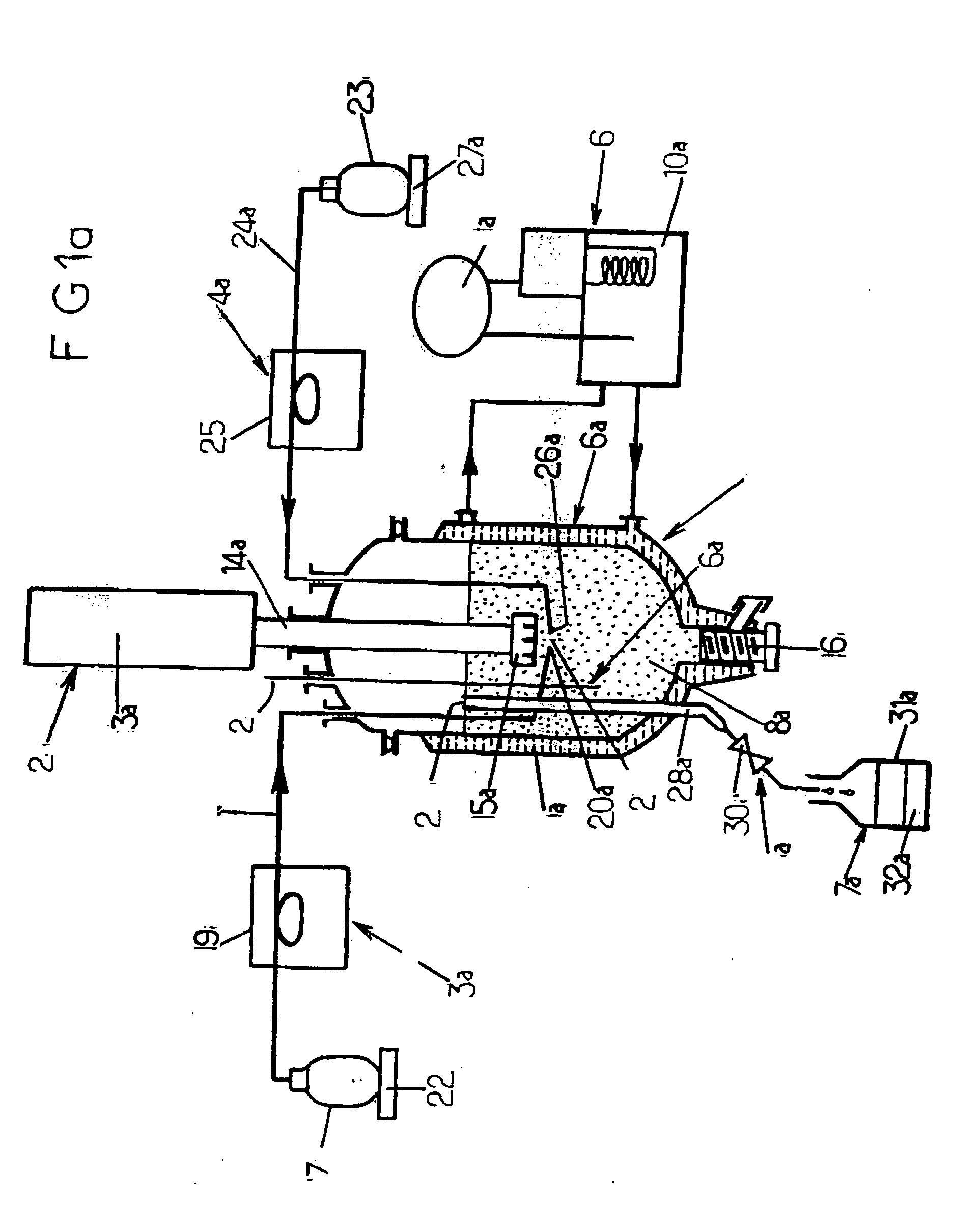Synthesis of hydroxylated polyorganosiloxanes by hydrolysis/condensation of halosilanes and apparatus therefor
a technology of hydroxylated polyorganosiloxanes and hydrolysis/condensation of halosilanes, which is applied in the direction of chemical apparatus and processes, chemical/physical/physical-chemical stationary reactors, chemical/physical/physical-chemical processes, etc., can solve the problems of polysiloxane entities, unsuitable for any subsequent use in industrial and commercial applications, and uncontrolled polycondensation, etc., to achieve the effect of simple, economic and efficien
- Summary
- Abstract
- Description
- Claims
- Application Information
AI Technical Summary
Benefits of technology
Problems solved by technology
Method used
Image
Examples
example 1
[0138] The reaction conditions employed are as follows:
[0139] Volume of the reactor=40 liters,
[0140] Organic phase flow rate=100 kg / h,
[0141] Aqueous phase flow rate=1000 kg / h,
[0142] T=40° C.,
[0143] P=1 atm.
[0144] The following reactants are employed in the loop reactor of FIG. 1:
[0145] Organic phase: dimethyldichlorosilane.
[0146] Aqueous phase: aqueous solution comprising 10% of sodium hydroxide and 3.3% of sodium carbonate.
[0147] Make-up water for varying the dilution of the organic phase; this water is preferably demineralized in order to limit the interactions with the salts present in the aqueous phase.
[0148] The example presents the impact of the amount of make-up water and thus of the fraction by weight of organic phase on the quality of the oil obtained (in terms of OH level).
TABLE 1OrganicAqueous phaseDemineralizedphase flowflow ratewater flow rateOH level byTestsrate(kg / h)(kg / h)weight1.11005752508.101.21005753309.001.310057544010.50
example 2
[0149] An in-line disperser of rotor / stator type was added to the loop reactor presented in FIG. 1. The organic phase is injected into the mixing chamber of the disperser, region of high dissipated power. The process is then carried out more than once while varying the rotational speed of the rotor. The operating conditions correspond to those of test 1.3.
TABLE 2TestsRotational speedOH level by weight1.425009.201.5300010.001.6350012.90
II—Batchwise Apparatus of FIG. 1a:
[0150] 1 / General methodology:
[0151] 1.1—Materials employed:
[0152] The aqueous phase comprises a buffer solution obtained from NaOH and from Na2CO3 dissolved in demineralized water. The amounts employed and the operating conditions are reported in the following Table 3.
[0153] The organic phase is composed of Me2SiCl2 manufactured and sold by Rhodia Silicones.
[0154] 1.2—Apparatus:
[0155] The apparatus used is that represented in the appended FIG. 1a described above.
[0156] 1.3—General procedure:
[0157] According t...
examples 3 to 9
2 / Examples 3 to 9
[0163] The operating conditions of the various tests are summarized in the following table, which also gives the OH level obtained.
TABLE 3Example 3Example 4Example 5Example 6Example 7Example 8Example 9Stirring rate (N) (min−1)24 00024 000950024 00024 00020 50020 500Me2SiCl2 (g / min)31.422.82325.625.022.922.6NaOH (g / min)19.516.116.316.415.016.216.0Na2CO3 (g / min)5.23.43.45.14.93.43.3Water (g / min)88.4101.5108.389.590.0105.4108.5Buffer (g / min)113.0121.0128.0110.9110.0125.0127.8Total flow rate (g / min)144.4143.8151.0136.5135.0148.0150.4NaOH / HCl (molar)1.01.11.11.050.971.11.1Base / HCl (molar)1.11.21.21.151.091.21.2Residence time (min)3.463.483.313.663.703.383.32Fraction by weight of0.220.160.150.190.1850.1550.15silanes (Xm) (by weight)OH level (%)9.812.55.011.010.08.29.5
[0164] The appended FIGS. 2 and 3 illustrate the results obtained with regard to the effect respectively of the fraction by weight of silanes Xm and of the stirring speed N on the OH level, tOH, as % by wei...
PUM
| Property | Measurement | Unit |
|---|---|---|
| pH | aaaaa | aaaaa |
| speed | aaaaa | aaaaa |
| speed | aaaaa | aaaaa |
Abstract
Description
Claims
Application Information
 Login to View More
Login to View More - R&D
- Intellectual Property
- Life Sciences
- Materials
- Tech Scout
- Unparalleled Data Quality
- Higher Quality Content
- 60% Fewer Hallucinations
Browse by: Latest US Patents, China's latest patents, Technical Efficacy Thesaurus, Application Domain, Technology Topic, Popular Technical Reports.
© 2025 PatSnap. All rights reserved.Legal|Privacy policy|Modern Slavery Act Transparency Statement|Sitemap|About US| Contact US: help@patsnap.com



